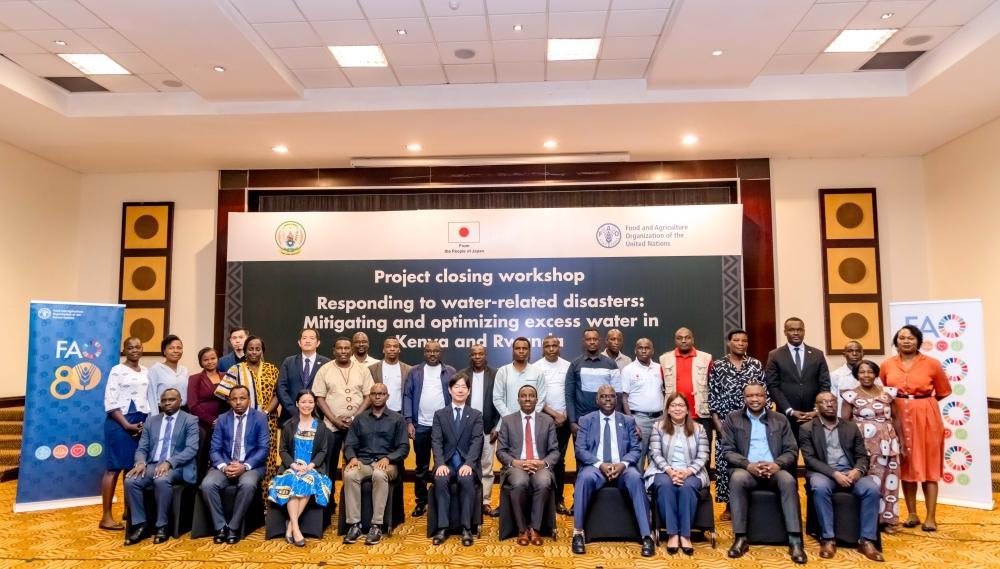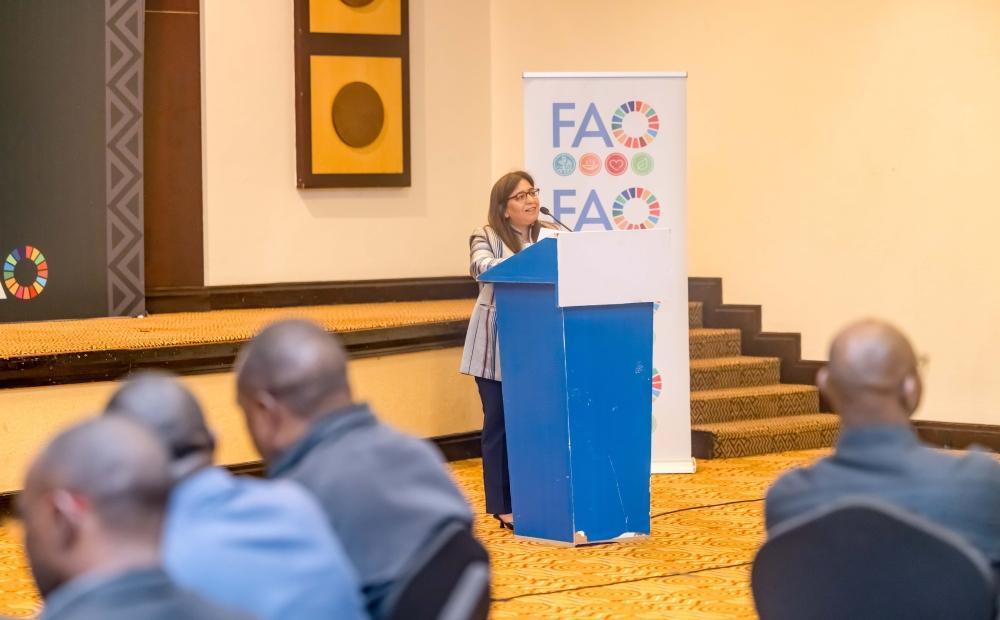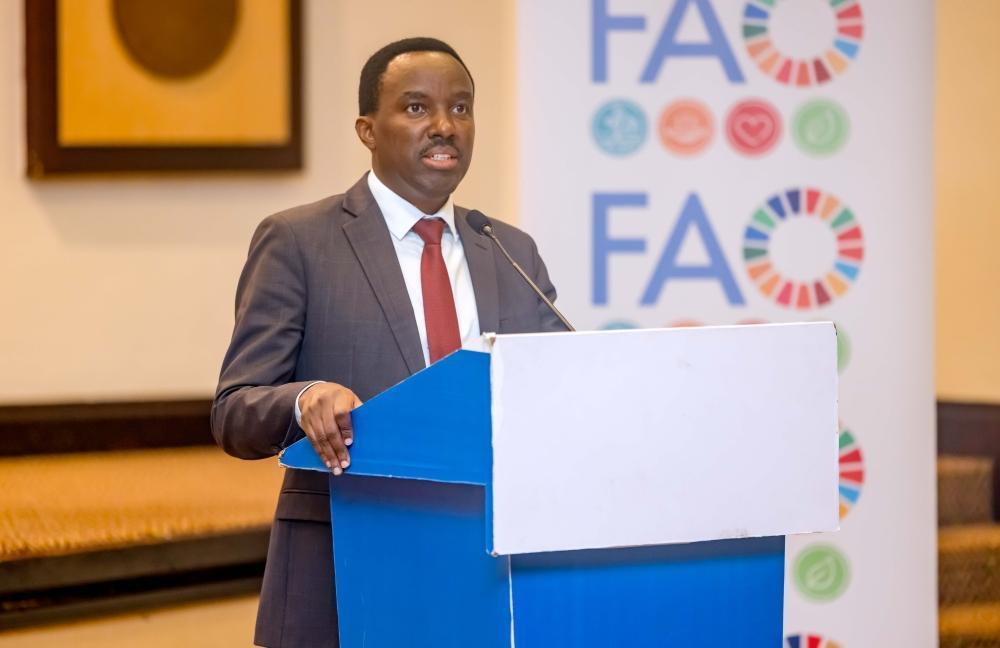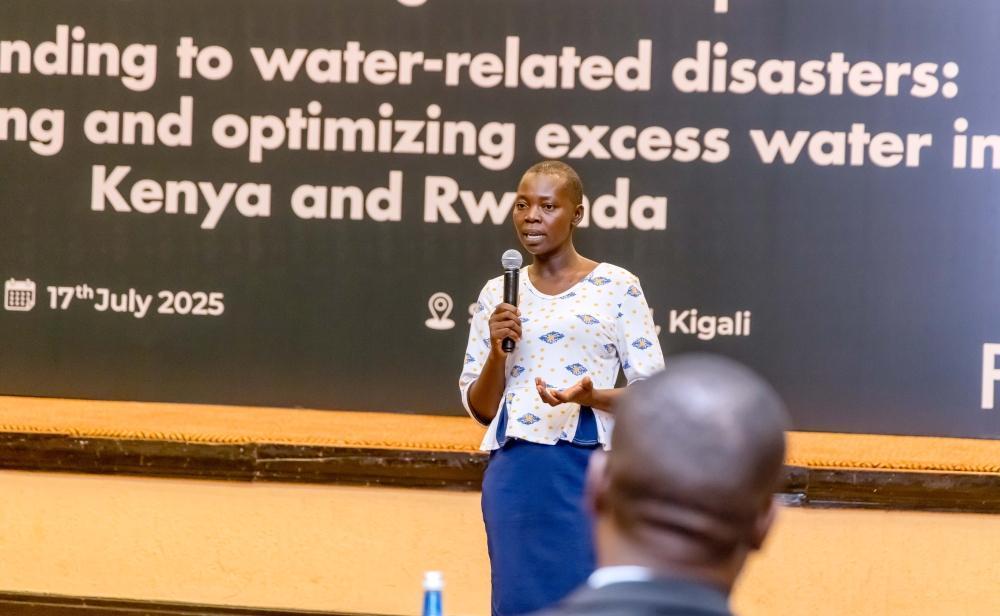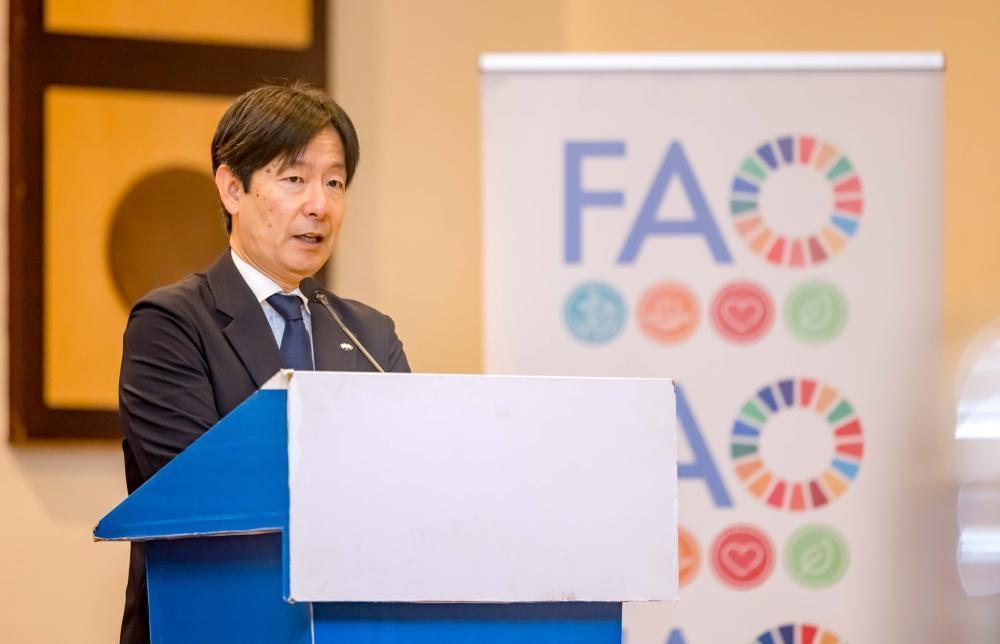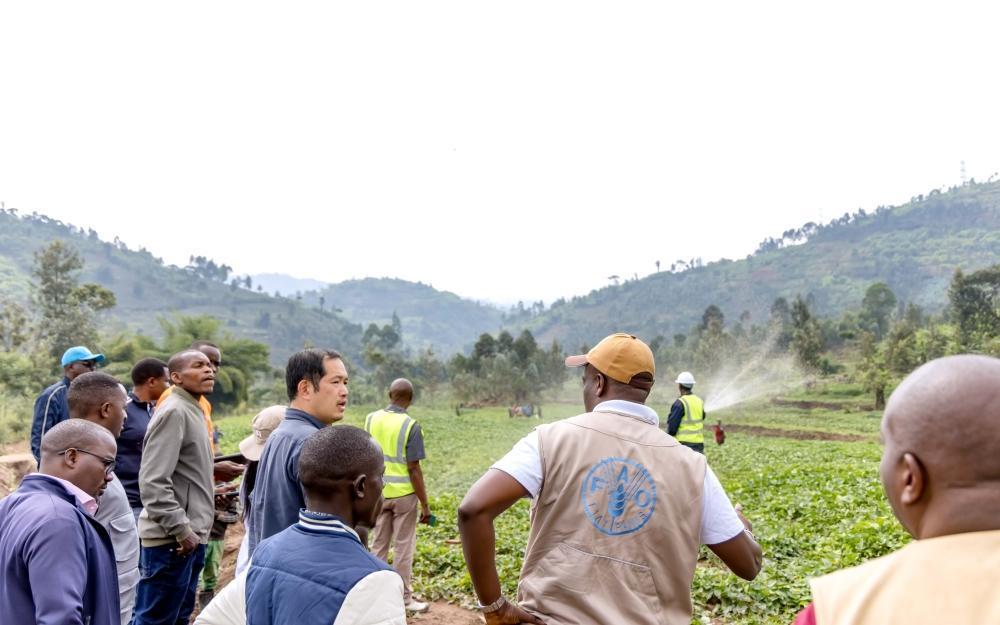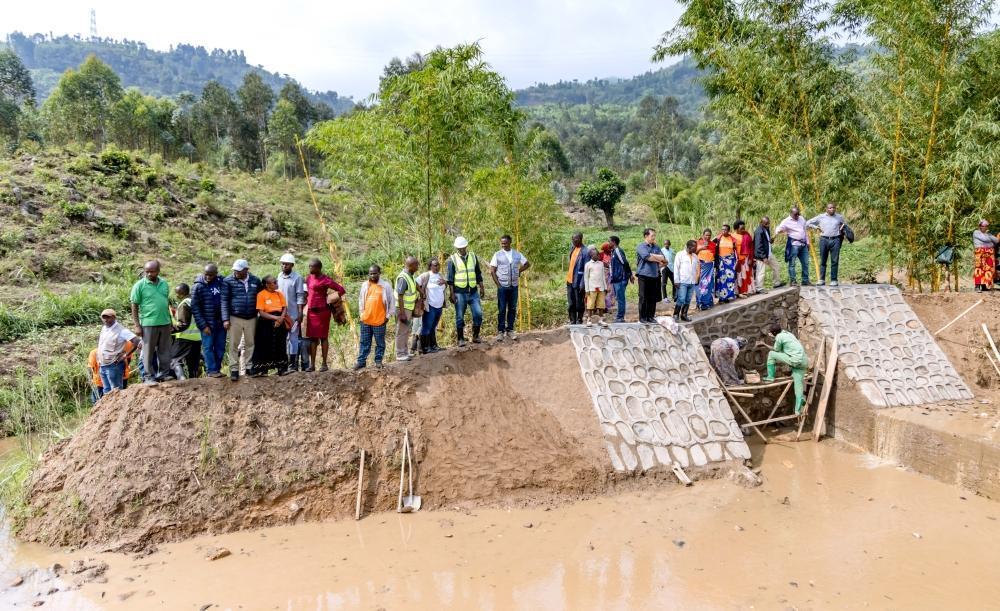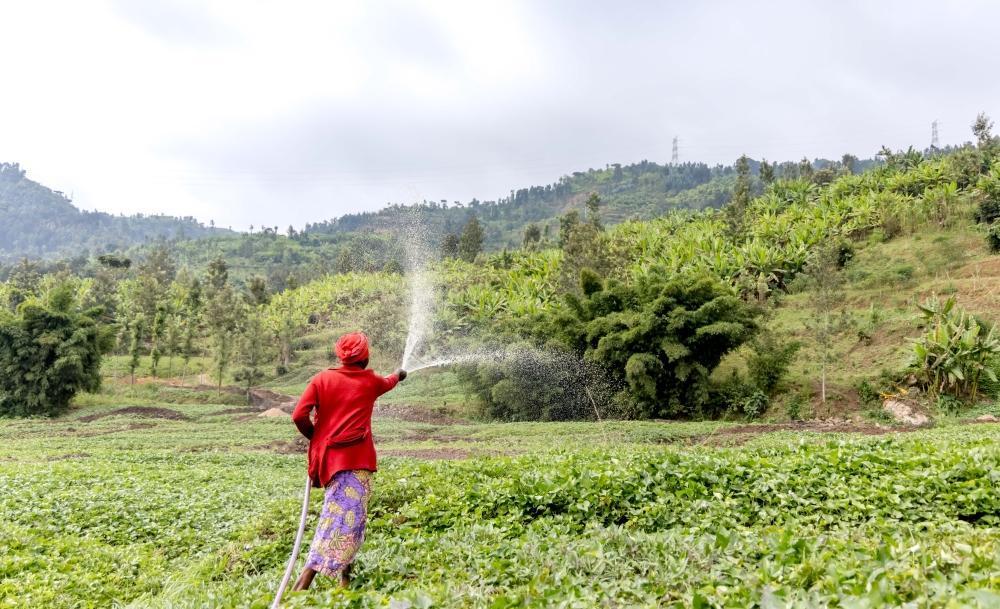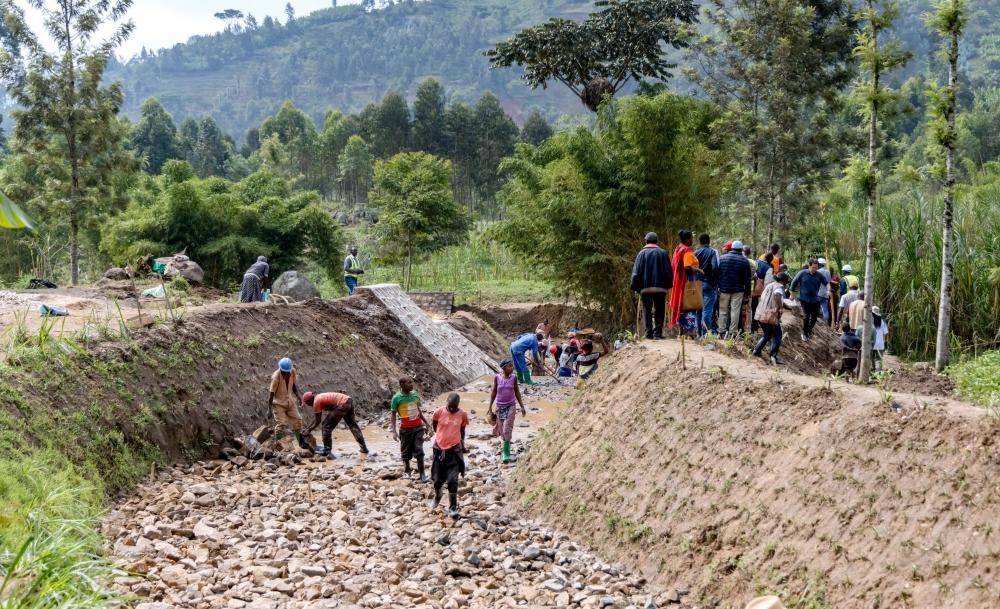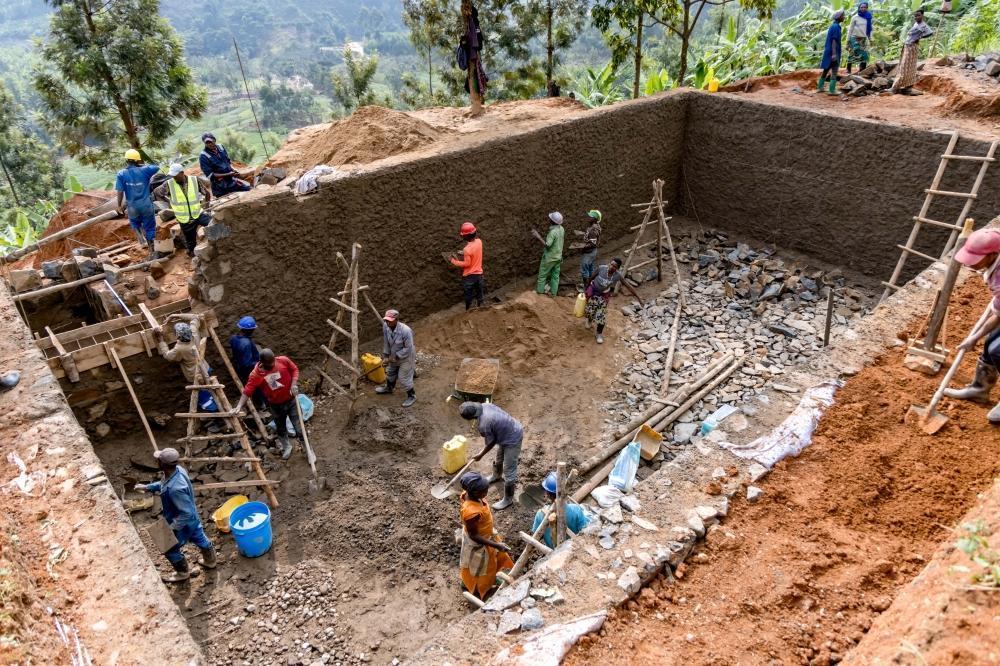Africa-Press – Rwanda. An FAO-led project, dubbed “Responding to Water-Related Disasters: Mitigating and Optimising Excess Water in Kenya and Rwanda,” constructed water reservoirs in Kenya to store excess runoff, which was then used for irrigation.
In Rwanda, the focus was on rehabilitating flood control systems such as canals and retention ponds, which also enabled irrigation.
The project, funded by the Government of Japan through the Mission of Japan to the African Union, was officially concluded on July 17, 2025 at Serena Hotel in Kigali.
Both countries benefitted from the USD1,260,197 grant.
Rwanda benefitted following heavy rainfall in May 2023 that caused severe damage in more than 10 districts across the Northern, Western and Southern Provinces.
Flooding and landslides destroyed approximately 3,115.88 hectares of land.
Mehnaz Ajmal Paracha, Officer-in-Charge, speaks on behalf of the FAO Representative
According to Mehnaz Ajmal Paracha, Officer-in-Charge who spoke on behalf of the FAO Representative, Burera and Rutsiro Districts were selected as beneficiaries of the project due to their severe soil erosion and lack of adequate drainage infrastructure, which had increased their vulnerability to water-related disasters.
To address these challenges, the project rehabilitated water and drainage infrastructure, benefiting 5,775 households (approximately 28,875 people) in Rutsiro and Burera Districts.
The interventions included the rehabilitation of 2.25 kilometres of flood control canals, retention ponds, and bridges.
The project also piloted the innovative use of excess water to enhance agricultural productivity.
“The irrigation systems and constructed bridges are already making a positive difference by improving productivity and ensuring safer mobility for the communities. By managing rainwater effectively, we not only mitigate disaster risks but also enable year-round agricultural production,” said Paracha.
She added that the project serves as a pilot for FAO, encouraging the Government of Rwanda and development partners to scale up similar interventions, particularly in areas where land can be irrigated after treating erosion gullies.
According to Placide Nshuti Kanyabujinja, a water engineer and irrigation expert at FAO Rwanda, the project also enhanced community awareness and preparedness.
“ It provided training for 100 individuals in Rutsiro and Burera, along with 50 local government staff from both districts. Topics included identifying flood hotspots, flood management techniques (both engineering and non-engineering), early warning systems, and preparedness strategies,” he said.
In Burera District, he noted, a 2 km gully was treated and a bridge constructed to help control floods from volcanoes that had been damaging crops.
In Rutsiro, one bridge was constructed, along with a 1 km water canal to enable the flow of water into the Koko River. Additionally, a 0.6 km gully—previously a source of flooding—was treated, and a storage pond was built for irrigation purposes.
“The total area to be irrigated is three hectares, with the potential to extend up to ten hectares. Households gained employment while also being safeguarded from disasters and improving agricultural production,” Kanyabujinja explained.
Edouard Zirimwabago, a farmer from Rutsiro District, stated:“We were trained on disaster prevention and preparedness since our region is hilly and prone to landslides. The project protected the Koko River and gave us jobs. We managed to afford health insurance fees and could buy food.
Previously, we only farmed two agricultural seasons, but now we can grow crops during Season C, which is typically dry, thanks to the established pond we use for irrigation. This is a sustainable solution to improve our livelihoods.”
Emmanuel Uwizeyimana, Vice Mayor in charge of Economic Development in Rutsiro District, noted that the new infrastructure would help prevent severe soil erosion.
Patrick Karangwa, Director of Agricultural Mechanization at the Ministry of Agriculture, gives his remarks at the event
Patrick Karangwa, Director General of Agriculture Modernisation at the Ministry of Agriculture and Animal Resources (MINAGRI), added that the project was timely, as water-related disasters in Rwanda pose a significant threat to millions of livelihoods—particularly in the Western, Northern and Southern Provinces.
He cited a study estimating that Rwanda loses 27 million tonnes of topsoil every year, resulting in the loss of about 3 million tonnes of crop production annually due to soil erosion.
“We need to increase land under agroforestry, expand conservation agriculture, scale up terracing, grow the area under irrigation, and increase the number of farmers accessing weather information.
We appreciate the people of Japan, FAO, local government, and all partners who contributed to the success of this project. We hope the lessons learned will have a multiplier effect, catalysing further interventions to tackle water-related disasters,” said.
Project results in Kenya
In Kenya, the project focused on Migori County, constructing community water reservoirs (water pans) to store excess water. Previously, this runoff had caused flooding, damaging roads, farms, and settlements in the lowlands.
These large community water pans can hold 70,000 cubic metres of storm runoff and support around 500 households (approximately 2,500 people) in irrigating over 40 hectares (100 acres) of land. The land has been planted with nutritious crops and certified hybrid rice seeds.
“In Kenya, the project constructed community water pans and supported farmers with improved certified rice and legume seeds.
It also enhanced job opportunities through grain threshing, particularly targeting youth and women entrepreneurs,” explained Joseph Matooko, who represented FAO Kenya at the project’s closing ceremony.
Doris Oseonyango, a farmer from Migori County, Kenya, shares her story. For three years, she tilled one acre using local seeds that yielded poor results
Doris Oseonyango, a farmer from Migori County, shared her story. She had previously tilled one acre using local seeds that yielded poor results for three years.
That changed in early 2025 when she met representatives from FAO and Japan, whose project focused on supporting vulnerable groups including youth, women, young women, and widows.
“As beneficiaries, we were given 10 kg of certified rice seed—variety 644, known as Rice Gold. We received training from the seedbed stage to transplanting and harvesting. Because the certified seed has more tillers, we were taught proper spacing to optimise production.
The hybrid seed was resistant to viral diseases, requiring fewer pesticides, and it adapted well to our local climate. As a result, our yields increased significantly,” she narrated.
She added:“The success inspired more farmers—especially young women—to engage in rice farming. With higher yields, we could pay for our social health insurance and access medical care. Children who had dropped out of school have returned, as we can now afford school fees. The community is happier.”
Eli Oyako Peter, another farmer, said the programme trained him in proper rice planting, pest and disease management.
“I planted 15 kg of seed on two acres and harvested 98 bags of rice. Before the training, I only harvested 20 to 30 bags. Thanks to the certified seed and training, my yield increased dramatically.Our community truly values the support from FAO and the people of Japan.”
Farayi Zimudzi, FAO’s Subregional Coordinator for Eastern Africa, reaffirmed FAO’s commitment:“FAO remains committed to working hand-in-hand with governments and local communities to turn challenges into opportunities and build resilient agri-food systems.”
Toru Sugio, Deputy Chief of Mission of Japan to the African Union, delivers his speech at the event
Toru Sugio, Deputy Chief of Mission of Japan to African Union congratulated the governments of Rwanda and Kenya for their commitment that contributed to the project success.
“We are proud that Japan, FAO, and the governments of Rwanda and Kenya have partnered on this project—not only to support agriculture but also to contribute to environmental conservation and disaster prevention.Today, we are also faced with a new global challenge—climate change. It is not just affecting Rwanda and Kenya, but the entire world, including Japan and Europe. It’s a shared crisis that demands shared solutions,” he said.
The project enabled and facilitated irrigation for local farmers
The project supports the establishment of flood control facilities
For More News And Analysis About Rwanda Follow Africa-Press

